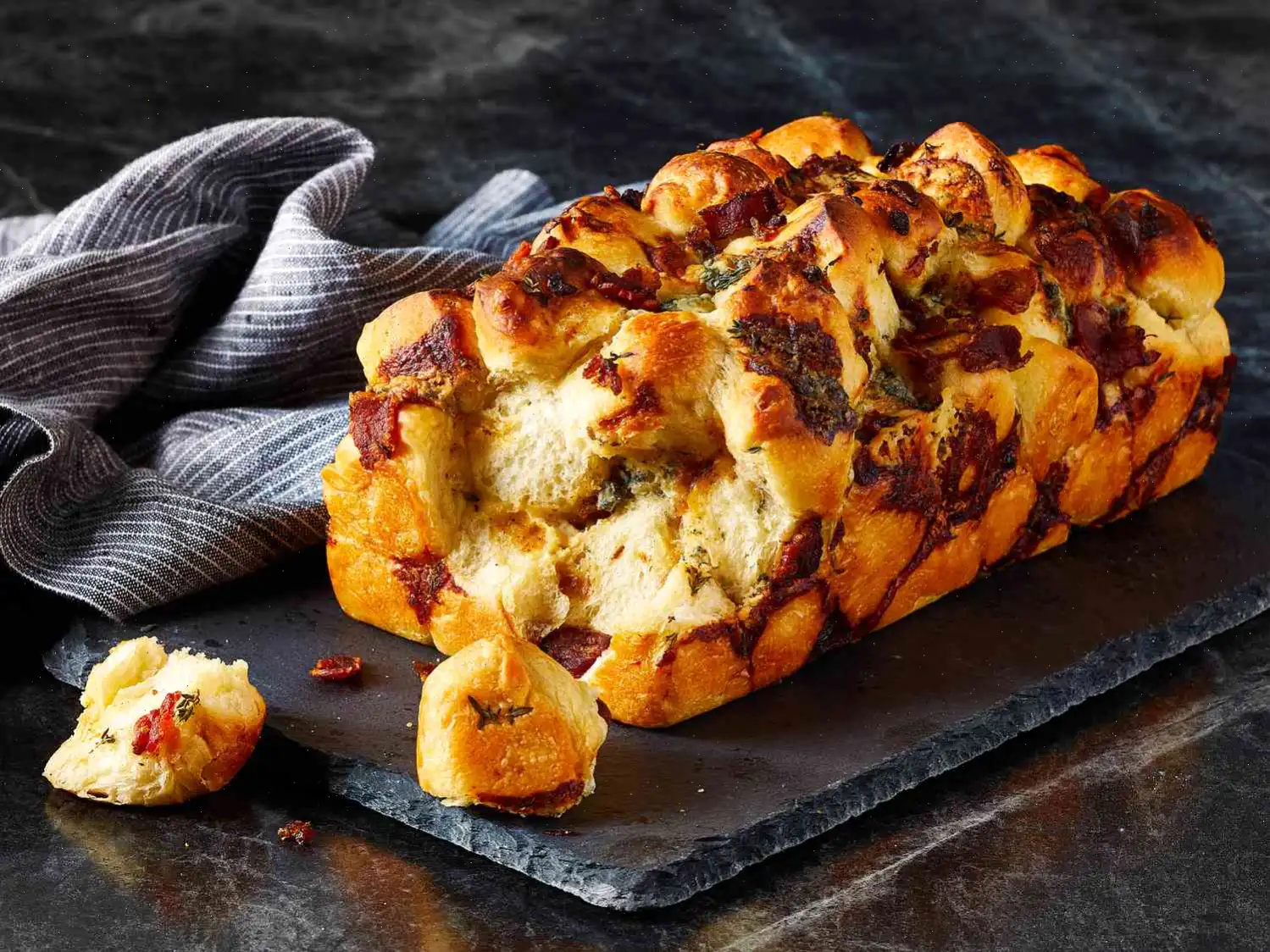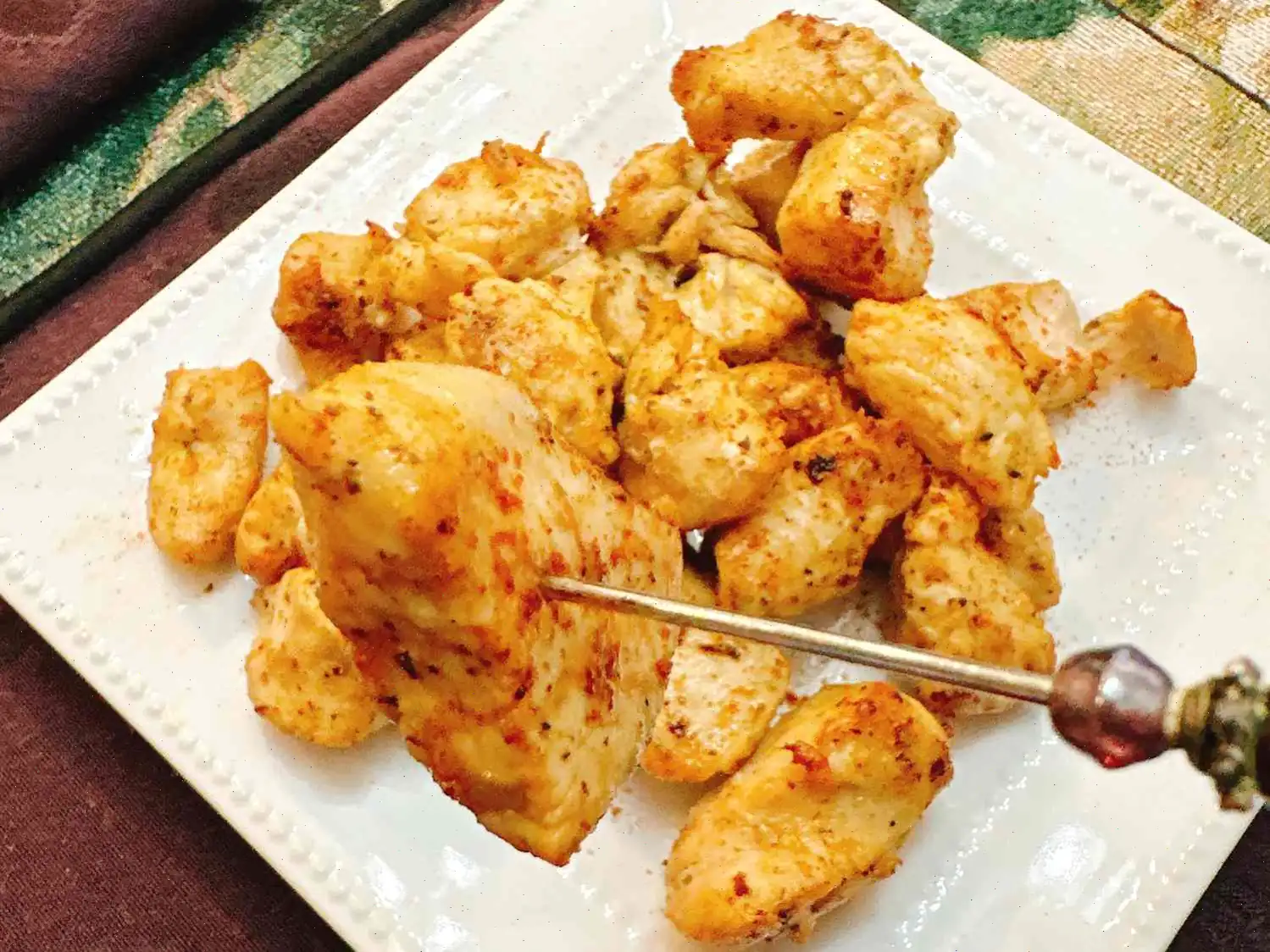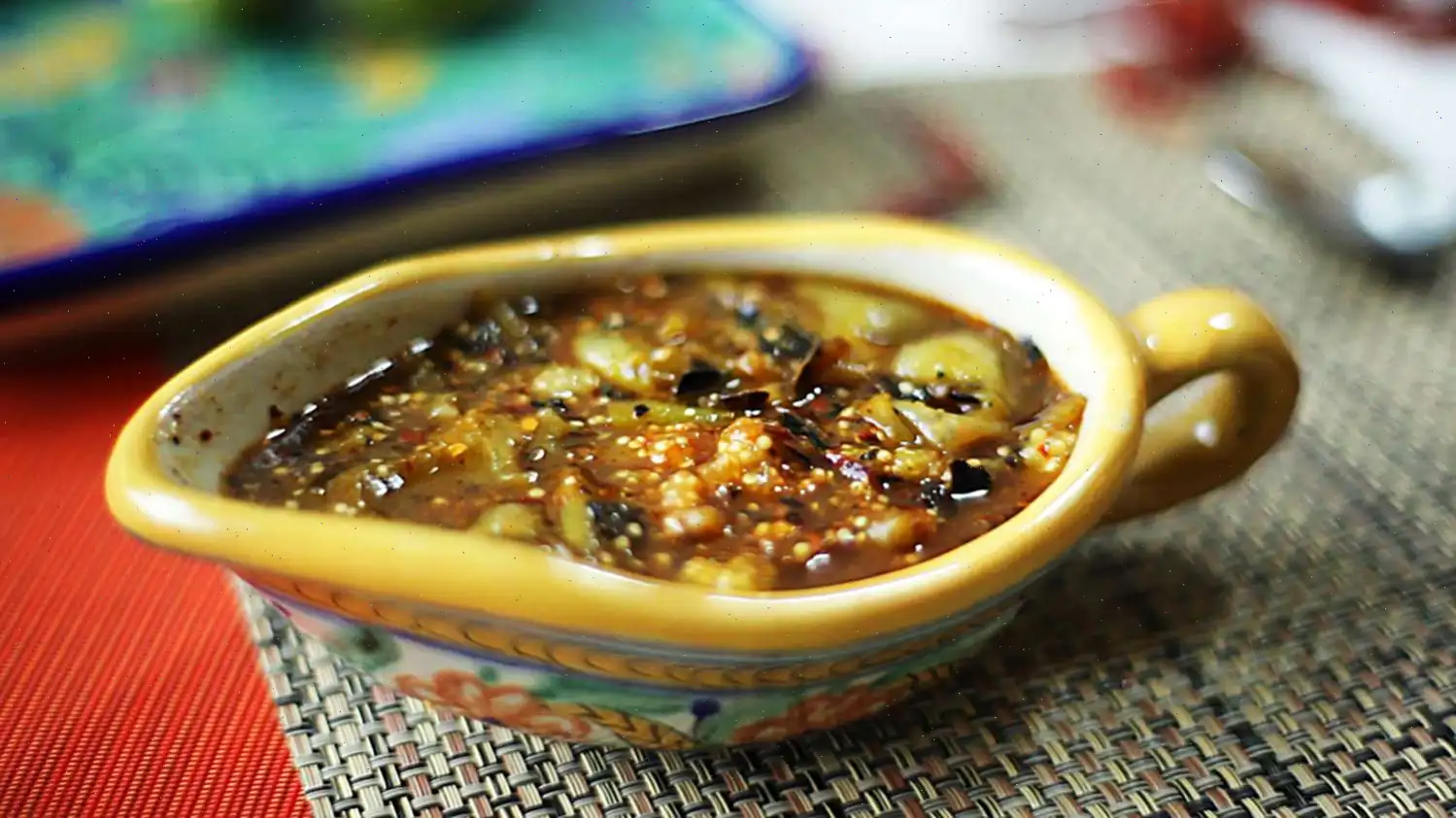
Pull-Apart Onion, Blue Cheese, and Bacon Bread Recipe
Ingredients
- 2 slices bacon
- 1 cup chopped onion
- 1/4 teaspoon freshly ground black pepper
- 1/2 cup crumbled blue cheese
- 1/2 teaspoon chopped fresh thyme
- 1/2 (3-lb.) package frozen white roll dough (18 rolls), thawed
- 1 tablespoon butter, melted
Directions
Step 1: Preheat your oven to 350F (175C). Line a 5x9-inch loaf pan with parchment paper, ensuring the paper extends beyond the long edges of the pan for easy removal later.
Step 2: Cook the bacon in a skillet over medium heat until it becomes crisp, which should take about 8 minutes. Once done, transfer the bacon to a paper towel-lined plate, reserving 1 tablespoon of the bacon drippings in the skillet. Let the bacon cool, then crumble it into small pieces.
Step 3: In the same skillet, cook the chopped onion in the reserved bacon drippings over medium-low heat. Cover and stir occasionally until the onions are tender, about 13 to 15 minutes. Uncover the skillet and continue cooking, stirring frequently, until the onions turn golden, approximately 3 to 5 more minutes. Stir in the freshly ground black pepper and set the mixture aside to cool.
Step 4: Once the onion mixture has cooled, stir in the crumbled bacon, blue cheese, and fresh thyme.
Step 5: Gently snip each roll of dough into quarters, being careful not to deflate the dough. Arrange 1/3 of the dough pieces in the prepared pan. Top this layer with 1/3 of the onion mixture. Repeat the layering process two more times, ending with the onion mixture on top. Drizzle the melted butter evenly over the top.
Step 6: Bake the dish in the preheated oven for about 45 minutes, or until the top is golden. Use an instant-read thermometer inserted into the center of the dish to check the temperature; it should read between 190F and 200F (87C to 93C).
Step 7: Once baked, allow the dish to cool in the pan for 5 minutes. Then, use the parchment paper overhang to carefully lift the loaf out of the pan. Serve warm.
Nutrition Facts (per serving)
| Calories | 589 |
|---|---|
| Total Fat | 35g (45% Daily Value) |
| Saturated Fat | 14g (72% Daily Value) |
| Cholesterol | 16mg (5% Daily Value) |
| Sodium | 653mg (28% Daily Value) |
| Total Carbohydrates | 62g (23% Daily Value) |
| Dietary Fiber | 3g (9% Daily Value) |
| Total Sugars | 2g |
| Protein | 7g (14% Daily Value) |
| Vitamin C | 2mg (2% Daily Value) |
| Calcium | 71mg (5% Daily Value) |
| Iron | 1mg (7% Daily Value) |
| Potassium | 190mg (4% Daily Value) |

Origin and History
This savory bread, with its layers of onion, blue cheese, and crispy bacon, draws from the rich tradition of pull-apart breads, which have become a popular feature at gatherings and parties. While the concept of pull-apart bread dates back to the 19th century in America, this specific recipecombining the bold flavors of blue cheese, bacon, and onionshas roots in more recent culinary trends that highlight savory bread options. The technique of layering dough with fillings and baking them together to create a loaf that "pulls apart" easily is a fun and interactive way to enjoy bread, making it a favorite for family meals and festive occasions.
Regional Variations
Pull-apart bread recipes can vary significantly depending on the region. In the southern United States, for example, pull-apart breads are often made with cheddar, sausage, and a variety of herbs, creating a heartier version of this dish. In contrast, this particular recipe with blue cheese, bacon, and onions represents a fusion of American comfort food with the sophistication of European flavors, like the pungent blue cheese typically used in French and Italian dishes. The combination of ingredients in this bread makes it a versatile dish that bridges regional cooking styles and flavors.
Distinctions from Similar Dishes
What sets the Pull-Apart Onion, Blue Cheese, and Bacon Bread apart from similar savory breads is its combination of rich, savory flavors and texture. Traditional pull-apart breads are often simpler, focusing primarily on the dough and basic fillings such as cheese or herbs. This bread, however, stands out with the use of blue cheese, which offers a sharp, tangy flavor that contrasts beautifully with the crispy bacon and caramelized onions. The addition of thyme provides an aromatic note that elevates the overall flavor profile. The technique of layering dough pieces and filling them with these ingredients ensures each bite is packed with flavor, making it a more complex and indulgent choice compared to other variations.
Where It's Typically Served
This bread is often served as an appetizer or side dish, especially during informal gatherings or holiday meals. Its shareable nature makes it a perfect choice for parties or potlucks, where guests can pull apart the bread and enjoy it with a variety of dips or sauces. In some households, it might even be enjoyed as a comforting accompaniment to a hearty soup or salad. The bold flavors of blue cheese and bacon make it particularly suitable for autumn or winter gatherings, adding warmth and richness to the meal.
Interesting Facts
- The technique of "pull-apart" bread has become increasingly popular due to its interactive nature, making it a hit at social events where guests can tear off pieces and share.
- Blue cheese, one of the key ingredients in this recipe, is known for its distinct moldy appearance and strong flavor. It is made by introducing mold cultures to the cheese, a process that dates back to ancient Roman times.
- The inclusion of bacon in bread recipes is often a nod to the American love for combining savory, salty flavors in unexpected ways, creating a rich and satisfying bite.
- This recipe can be adapted to suit different tastesswap the blue cheese for cheddar or goat cheese, or replace the bacon with pancetta or sausage to create new variations of the dish.
You can listen to this recipe in AI audio format. Simply click the play button below to listen to the content in a format that suits you best. It’s a great way to absorb information on the go!








